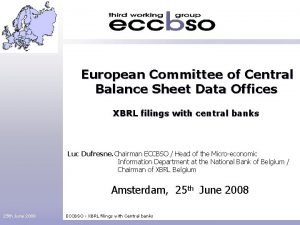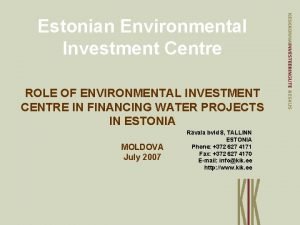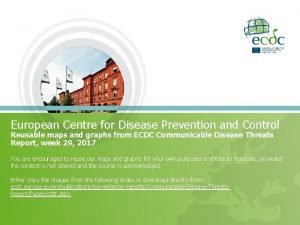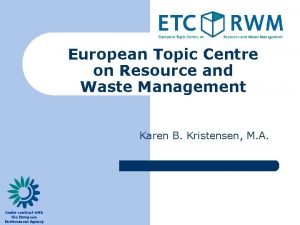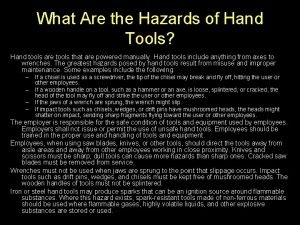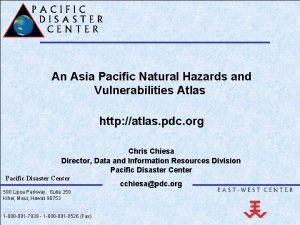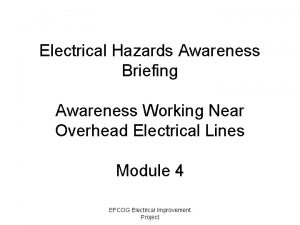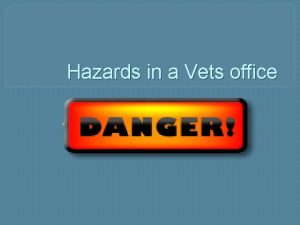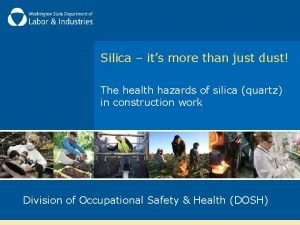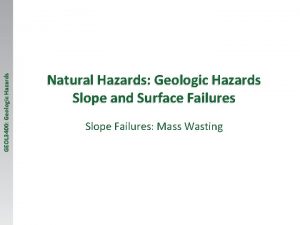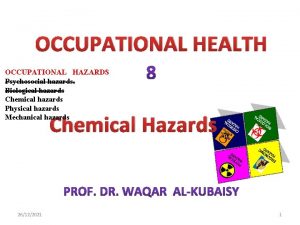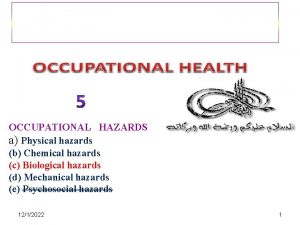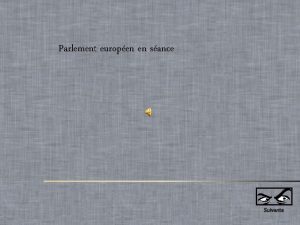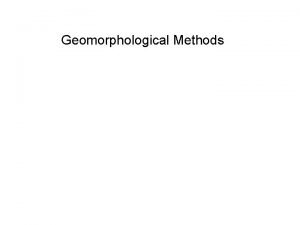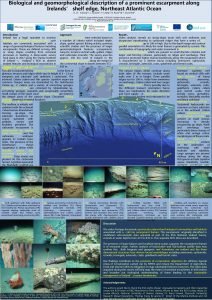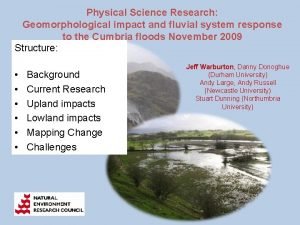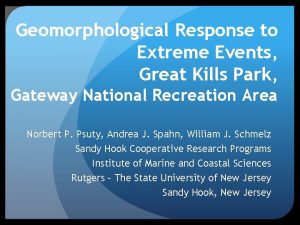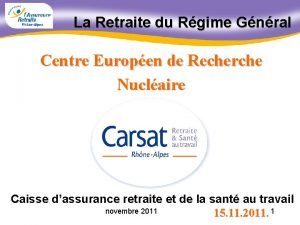European Centre on Geomorphological Hazards Centre Europen sur



















- Slides: 19

European Centre on Geomorphological Hazards Centre Européen sur les Risques Géomorphologiques M. Nodia Institute of Geophysics European Centre “Geodynamical Hazards of High Dams European Centre on Urban Risks Project 2016 -2017 – Synthesis 2017 European Landslide Hazard Maps: Fostering European Harmonization of Slope Movement Hazard Assessment at various spatial scales

Objectives • To finalize and critically evaluate the European Landslide Susceptibility Map ELSUS v 2 developped in former APO-supported projects • To propose landslide triggering thresholds for several European regions • To integrate triggering factors (rainfall, seismic activity) in the various landslide susceptibility assessment methods (geomorphological approach, statistical/processbased models) for hazard assessment at national/global scales

European Landslide Hazard Maps: Fostering European Harmonization of Slope Movement Hazard Assessment at various spatial scales CERG inputs: quantitative validation of landslide susceptibility map ELSUS v 2 Andreas GUENTHER, Martina WILDE, Marta JURCHESCU, Paola REICHENBACH, Jean-Philippe MALET, Javier HERVAS

Context: Assessing landslide susceptibility at the European scale The European Landslide Susceptibility map ELSUS 1000 (2013) (downloadable at JRC´s ESDAC) Günther et al. 2014 - Semi-heuristic (SMCE) methodology - Enriched landslide dataset (30% more data) - Exploiting new data sources for deriving control factors: BGR IHME lithology - Improving spatial resolution (1 km 200 m) - Enlarging spatial coverage (including Iceland, the Faroes, the Shetlands and Cyprus) - Qualitative evaluation of ELSUS 1000 by European experts incorporated ELSUS v 2 Wilde et al. (in press, Jo. M)

Results: Collaboration of CERG with EOEG for the validation of ELSUS v 2 Setup of the methodology for evaluating the reliability/validity and usefulness of the ELSUS v 2 map at national and regional levels for various European countries/regions: • Qualitatively: Questionnaire • Quantitatively: 1) Evaluating ELSUS v 2 with independent small-scale national/regional landslide inventory data from by EOEG members 2) Evaluating ELSUS v 2 with small-scale national/regional landslide susceptibility maps held by EOEG members

Results: Towards a European Landslide Inventory • To improve ELSUS (e. g. v 3), a more exhaustive landslide inventory is needed containing the most important attributes (location, typology, accuracy and time)? • How to initiate this activity? As data are hosted by several types of organisms (e. g. Geo. Surveys, Research institutes, Civil Protection, etc) • How to harmonize small-scale inventories based on different sources Sources of landslide information used for ELSUS

Why is it useful to get access to enhanced landslide information? • Performing a European-wide quantitative, statistical landslide assessment • Performing a typologically-differentiated assessment (slides+flows vs. falls+topples), since criteria sometimes completely differ for different types (e. g. slope values slides vs. falls) by • organizing landslide inventory information in terms of quality (i. e. completeness, accuracy, consistency) and typology Statistical experiment modeling in progress (one European zone) Uncertainty map (difference in susceptibility classes between statistical map and semiquantitative map) Requirements for a statistical analysis: Information on quality of data: - Accuracy in rel. to Resolution - Completeness - Consistency Information on process typology Accurate, complete and typological landslide information could significantly contribute to improving the ELSUS map, enhancing the reliability of results

M. Nodia Institute of Geophysics European Centre “Geodynamical Hazards of High Dams European Landslide Hazard Maps: Fostering European Harmonization of Slope Movement Hazard Assessment at various spatial scales GHHD inputs: landslide hazard mapping including triggering effects: fuzzy logic approach Tamaz Chelidze, Tamo Tsamalashvili, M. Fandoeva

Standard approach: combination of stationary maps • The three-factor maps have been selected from the existing factormaps dataset: • Lithology – derived from the Engendering geological map (initially 54 classes have been reworked into 8 classes) • Land use – from the Terra MODIS image (originally 16 classes have been regrouped into 7 classes) • Slopes obtained from DTM (Aster) have been reclassified into 8 classes

Standard stationary landslide and mudflow susceptibility maps of Georgia

How to integrate dynamic factors in the assessment? • This approach uses the long-term (e. g. for 100 years) local precipitation (Guzetti) or soil wetness (Baum, Godt) data as an additional quasi-stationary factor, which can be added to a standard list of factors: slope, geology, etc. • For including precipitation triggering effects we used the map of maximum 5 -day (100 hours) precipitation for 100 years return period in Georgia (Atlas of geo-hazards of Georgia)

Development of a Fuzzy Logic approach to integrate datasets How does FL methodology work? • • • Choose of the fuzzy sets (linguistic terms )that describe the linguistic variable precipitation: very low, middle, high, very high. • The following rule - IF precipitation is middle and landslide is not so many THEN hazard is middle - is an example of such rule. The linguistic terms for linguistic variable hazard should be also defined, for example: no hazard, low hazard, middle hazard, high hazard, very high hazard. The next step is to construct the IF - THEN rule bases, where IF-part includes two variables - precipitation and landslide - they are input variables, and one output variable - hazard. Example If the landslide hazard of the polygon equals to 2 and precipitation of the same polygon equals to 190 mm (which belongs to the “High” group of precipitation, with the same membership function) Landslide Precipitation 1 0. 8 2 High 0. 6 0. 4 0. 2 0 0 10 then we get the membership function of the landslide hazard groups 170 200 250

Development of a Fuzzy Logic approach to integrate datasets

Results: rainfall-triggered landslide hazard map for rain event of 100 yr return period

Results: rainfall-triggered landslide hazard map for rain event of 100 yr return period

European Centre on Geomorphological Hazards Centre Européen sur les Risques Géomorphologiques M. Nodia Institute of Geophysics European Centre “Geodynamical Hazards of High Dams European Centre on Urban Risks Project 2018 -2019 – Objectives 2018 Space data in Disaster Risk Reduction: using satellite precipitation data and hydrological information for leapfrogging landslide forecasting

• Improving the methodology for defining dynamic landslide hazard maps using hydrological information and satellite-derived precipitation forecast • Identification of the best hydrological information to integrate (e. g. ; soil moisture products, etc) • Test on several regions where datasets already available and collaboration established • Analysis of extreme storm events creating landslide disasters scaling laws among landslide properties (size, number, runout) and rain properties

• Analysis of extreme storm events creating landslide disasters scaling laws among landslide properties (size, number, runout) and rain properties Scalling laws. Taiwan. Global appro ch: - Diverse sites and precipitation conditions - Focus on Tropics, - Focus on sedimentary and crystalline roks - Focus on several tectonics forcings Ethiopie (Volcanique) ++, +

Landslide event in Freetown, Summer 2017 – Sierra Leone Thank you!
 Eccbso
Eccbso Allez vous en sur les places
Allez vous en sur les places Cours sur la gestion axée sur les résultats
Cours sur la gestion axée sur les résultats Centre marceau batz sur mer
Centre marceau batz sur mer Eic european investment centre
Eic european investment centre European centre for disease prevention and control
European centre for disease prevention and control European foundation centre
European foundation centre European topic centre
European topic centre Centroid by integration
Centroid by integration Centre of gravity of different shapes
Centre of gravity of different shapes Darkness conceals hazards such as
Darkness conceals hazards such as Hazards of hand tools
Hazards of hand tools Pd/c hazards
Pd/c hazards Autoclave hazards
Autoclave hazards Safety
Safety Hazards
Hazards Physical hazards in a veterinary clinic
Physical hazards in a veterinary clinic Silica health hazards
Silica health hazards Hazards of immunization
Hazards of immunization Precautionary principle
Precautionary principle
